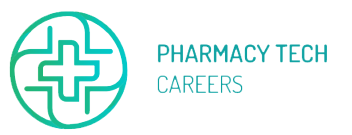What is Digital Health?
Digital health is a rapidly growing field that combines healthcare and technology to improve patient care and enhance the overall healthcare system. It encompasses a wide range of technologies and innovations that aim to make healthcare more accessible, efficient, and personalized.
A. Definition
Digital health, also known as eHealth or health IT, refers to the use of digital technologies and electronic devices to manage and deliver healthcare services. It involves the collection, analysis, and exchange of health information to improve patient outcomes, streamline processes, and empower individuals to take control of their health.
Digital health technologies can be used across various healthcare settings, including hospitals, clinics, pharmacies, and even in patients’ homes. These technologies encompass a broad spectrum of applications, such as electronic health records (EHRs), telemedicine, mobile health (mHealth) apps, wearable devices, and artificial intelligence (AI) systems.
B. Types of Technologies
1. Electronic Health Records (EHRs): EHRs are digital versions of patients’ medical records that provide a comprehensive view of their health history. They allow healthcare providers to access and share patient information securely, enabling coordinated care and reducing errors.
2. Telemedicine: Telemedicine utilizes telecommunications technology to provide remote medical services. It allows patients to consult with healthcare professionals via video calls, phone calls, or online messaging platforms. Telemedicine is particularly useful for patients in rural areas or those with limited mobility.
3. Mobile Health (mHealth) Apps: mHealth apps are smartphone applications that help users monitor their health and manage chronic conditions. These apps can track vital signs, remind patients to take medication, provide educational resources, and connect users with healthcare providers for virtual consultations.
4. Wearable Devices: Wearable devices, such as smartwatches and fitness trackers, collect health data like heart rate, sleep patterns, and physical activity. They can provide valuable insights into an individual’s overall health and allow healthcare professionals to monitor patients remotely.
5. Artificial Intelligence (AI) Systems: AI-powered systems use algorithms and machine learning to analyze vast amounts of healthcare data. They can assist in diagnosing diseases, predicting patient outcomes, and recommending personalized treatment plans based on individual characteristics.
Digital health technologies offer numerous benefits, including improved patient engagement, enhanced communication between healthcare providers and patients, reduced healthcare costs, and increased efficiency in healthcare delivery. These technologies have the potential to revolutionize the pharmacy technician career by enabling better medication management, facilitating telepharmacy services, and enhancing patient counseling.
To learn more about digital health and its impact on the pharmacy technician field, you can visit reputable sources like the Office of the National Coordinator for Health Information Technology or the National Center for Biotechnology Information.
In conclusion, digital health encompasses a wide range of technologies that aim to transform healthcare delivery. By embracing these advancements, pharmacy technicians can play a vital role in utilizing digital health tools to improve patient care and contribute to the evolution of the healthcare industry.
II. Privacy and Security Issues in Digital Health
A. Privacy Concerns
Privacy concerns are paramount in the digital health landscape, especially when it comes to the pharmacy technician career. Protecting patient data and information is crucial to maintaining trust and confidentiality. Let’s explore some key privacy concerns in this field:
1. Access to Data and Information: Ensuring that only authorized individuals have access to patient data is essential. Pharmacy technicians must adhere to strict protocols and obtain proper authorization before accessing any patient information.
2. Use of Data and Information: Pharmacy technicians should only use patient data and information for legitimate purposes related to their roles. Any unauthorized or inappropriate use of this data can result in severe legal and ethical consequences.
3. Collection of Data and Information: Pharmacy technicians must follow established guidelines when collecting patient data. They should only collect necessary information relevant to providing appropriate pharmaceutical care. Collecting excessive or unnecessary data is a breach of privacy.
To stay updated on privacy concerns, pharmacy technicians can refer to authoritative resources such as the Health Insurance Portability and Accountability Act (HIPAA) website (www.hhs.gov/hipaa) for comprehensive information.
B. Security Concerns
Security measures play a vital role in protecting patient data from unauthorized access or breaches. Pharmacy technicians should be aware of the following security concerns:
1. Authentication & Authorization: Ensuring that only authorized individuals can access the system is crucial. Pharmacy technicians should use unique login credentials and strong passwords to prevent unauthorized access to patient records.
2. Integrity & Availability of Data & Information: It is essential to maintain the integrity and availability of patient data at all times. Pharmacy technicians should follow best practices to prevent data loss, corruption, or unauthorized modifications.
3. Compliance with Regulatory Requirements: Pharmacy technicians must comply with all applicable regulatory requirements, including those related to data security. Familiarity with regulations such as HIPAA and the General Data Protection Regulation (GDPR) is essential to ensure patient data remains secure.
Pharmacy technicians can enhance their knowledge of security concerns by referring to reputable sources such as the National Institute of Standards and Technology (NIST) website (www.nist.gov).
In conclusion, privacy and security issues are critical considerations for pharmacy technicians in the digital health era. Adhering to privacy protocols, maintaining data security, and staying updated on regulatory requirements are crucial steps in protecting patient information and ensuring ethical practice in the pharmacy technician career.
Strategies for Mitigating Privacy & Security Risks in Digital Health
A. Developing Robust Policies and Procedures
In the digital age, the healthcare industry has seen a significant shift towards the use of technology, including the adoption of electronic health records (EHRs) and other digital health solutions. While these advancements bring numerous benefits, they also introduce privacy and security risks that need to be addressed. As a pharmacy technician, it is crucial to understand and implement strategies to mitigate these risks effectively.
Developing robust policies and procedures is an essential step towards safeguarding patient privacy and ensuring data security. Here are some key considerations to keep in mind:
1. Conduct regular risk assessments: Regularly assess potential vulnerabilities in your organization’s digital health systems. Identify any gaps in security measures and address them promptly.
2. Establish clear guidelines: Create comprehensive policies and procedures that outline how patient data should be collected, stored, accessed, and shared. Clearly define roles and responsibilities for all staff members involved in handling sensitive information.
3. Train employees: Provide thorough training to all staff members on privacy and security best practices. Ensure they understand the importance of protecting patient information and are knowledgeable about potential risks.
4. Regularly update policies: Stay up-to-date with evolving privacy laws and regulations. Review and update your policies and procedures accordingly to ensure compliance.
5. Monitor system access: Implement strict access controls to limit who can access patient data. Regularly review user access privileges and revoke access for individuals who no longer require it.
6. Incident response plan: Develop a comprehensive incident response plan to address potential breaches or unauthorized access incidents. This plan should include steps for containment, investigation, notification, and recovery.
B. Establishing Technical Controls
In addition to policies and procedures, implementing technical controls is crucial for maintaining privacy and security in digital health settings. Here are some key technical measures to consider:
1. Strong authentication: Implement multi-factor authentication (MFA) to ensure that only authorized individuals can access sensitive information.
2. Encryption: Encrypt all patient data both in transit and at rest. This adds an extra layer of protection, making it harder for unauthorized individuals to access or decipher the information.
3. Regular software updates: Keep all software and systems up-to-date with the latest security patches. Outdated software can be vulnerable to cyber-attacks.
4. Firewalls and antivirus software: Install firewalls and reliable antivirus software to detect and prevent unauthorized access and malware infections.
5. Intrusion detection and prevention systems: Implement intrusion detection and prevention systems to monitor network traffic and detect any suspicious activities.
6. Regular backups: Regularly back up all patient data to ensure that it can be recovered in the event of a system failure or data breach.
C. Adopting a Risk-Based Approach to Security
A risk-based approach is essential for prioritizing security efforts and allocating resources effectively. Consider the following steps:
1. Identify risks: Conduct a thorough assessment of potential risks, considering factors such as the sensitivity of the data, likelihood of threats, and potential impact on patients and the organization.
2. Prioritize risks: Determine which risks pose the greatest threat to patient privacy and data security. Focus your efforts on mitigating these high-priority risks first.
3. Develop risk mitigation strategies: Once you have identified high-priority risks, develop strategies to mitigate them effectively. This may involve implementing technical controls, updating policies, or enhancing staff training.
4. Continuously monitor and reassess: Regularly monitor your systems, policies, and procedures to ensure they remain effective in mitigating risks. Reassess your risk landscape periodically to account for changes in technology and industry trends.
D. Creating Transparency with Patients
Transparency is vital in maintaining patient trust and ensuring their engagement in digital health initiatives. Here are some steps to foster transparency:
1. Patient education: Educate patients about the benefits and risks of digital health solutions. Provide clear and concise information about how their data will be collected, stored, and used.
2. Consent and privacy notices: Obtain informed consent from patients for the collection and use of their data. Clearly explain their privacy rights and how their data will be protected.
3. Opt-out options: Provide patients with the option to opt-out of certain data collection or sharing practices if they wish to do so. Respect their preferences and ensure their choices are honored.
4. Privacy policy accessibility: Make your organization’s privacy policy easily accessible to patients. Clearly communicate how their data will be handled and provide contact information for any privacy-related inquiries.
By implementing these strategies, pharmacy technicians can play a crucial role in safeguarding patient privacy and ensuring the security of digital health systems. Stay informed about industry best practices and regularly update your knowledge to adapt to the evolving landscape of digital health security.
For further information on digital health security, you can refer to reputable sources such as the U.S. Department of Health & Human Services’ Office for Civil Rights (OCR) and the National Institute of Standards and Technology (NIST).
Remember, protecting patient privacy is not only a legal obligation but also an ethical responsibility that contributes to building trust in healthcare systems.

